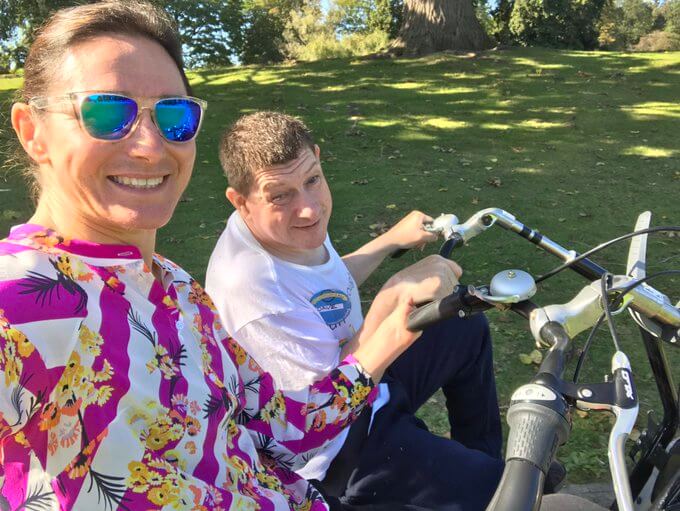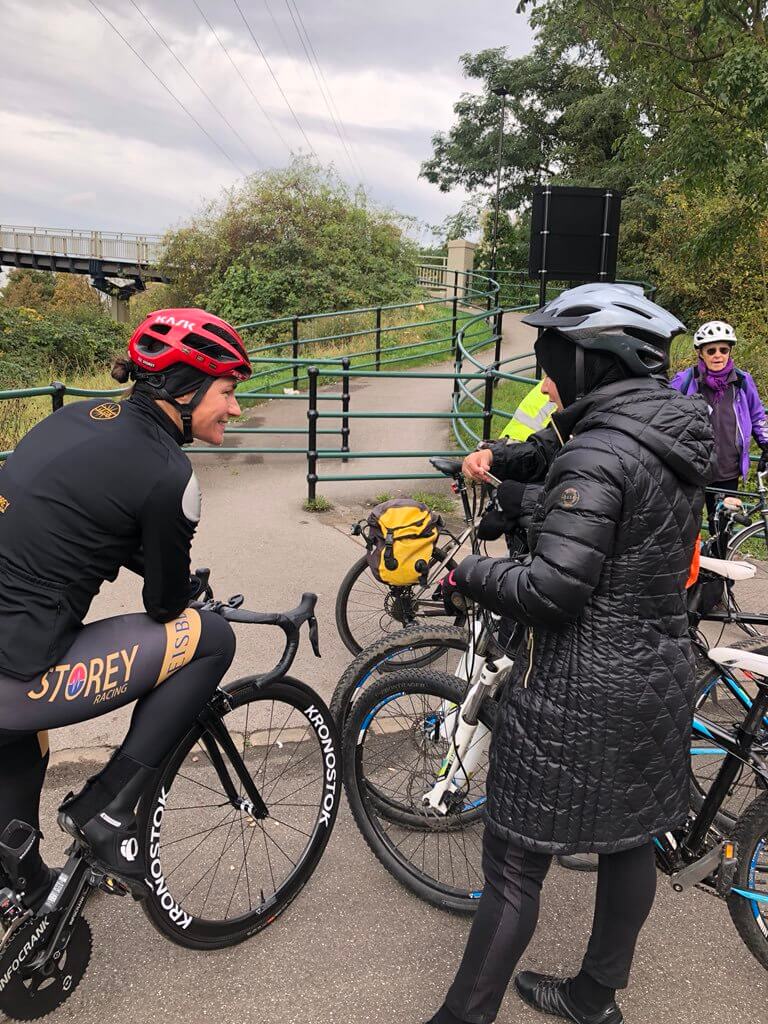With 14 Paralympic gold medals and 35 world titles under her belt there’s no doubting Dame Sarah Storey’s cycling prowess. Now, as an Active Travel Commissioner, she’s turning her attention to how getting about on two wheels can be a part of daily life for children and adults in Sheffield City Region. We sat her down to talk about her new role and find out what the future looks like for active travel.
Having spent more than 14 years in the saddle, picking up numerous medals, titles and world records along the way, it’s fair to say that Dame Sarah Storey is more than comfortable on two wheels. Now she’s on a mission to help non-athletes discover the joys, and practicalities, of getting about by bicycle.
Sheffield City Region (SCR) Mayor Dan Jarvis appointed Dame Sarah as Active Travel Commissioner in April 2019, calling on Britain’s most successful Paralympian to champion active ways of getting around the region. She’s in good company across the north, with Chris Boardman (Manchester), Alistair Brownlee (Leeds) and Simon O’Brien (Liverpool) spearheading a renewed focus on health and transport in their areas.
“Active travel covers everything that’s not motorised transport, including e-bikes and e-trikes, walking, cycling, scooting, skateboarding, in Sheffield even canoeing can be part of active travel!” Dame Sarah explains. “Generally we talk about active travel for the shorter journeys – up to about 5km.
“SCR were undertaking a rail review and a bus review, so it was important that connectivity with active travel at the heart of it was being prioritised. As we know from looking around the whole of the UK, unfortunately the last 30 years have been very car centric and what has been built [for active travel] has been rather piecemeal and not up to very good standards.”

With a team behind her, strong links with community groups, decision makers and public health professions, and a passion for being active, she set out to make a difference not only to the way people travel, but also to their health and happiness. “I really like the fact that you can affect people’s lives every day – the way they move around and their activity levels,” she says. “That’s something that’s always interested me – getting people more active, allowing people to move around more easily, and just getting people to enjoy the place they live.”
Vitally, she wants to be part of a movement to ensure places are built around people, and help them move away from using the car by default for things like getting the kids to school or going to the train station.
There are many selling points, and for Dame Sarah one of the biggest is the positive benefit that active travel can have on mental and physical health. More walking and cycling could help to address the obesity crisis and Type 2 diabetes epidemic, she says, and any activity has a huge impact on mental wellbeing too. “The happy endorphins that you get from a blast of fresh air is something we think everyone is entitled to have,” she explains.
There are also time savings to be made and an easier journey to be enjoyed. “Just getting more active means you’re more productive, hopefully that will lead to people getting a better education or work-life balance, and hopefully you’ll be able to spend some more time together as a family.”
Getting people to ride a bike to school or work is not actually as easy as riding a bike though.
The main challenge when it comes to cycling, Sarah explains, is that many people simply don’t have the confidence to get on two wheels, in large part because of the facilities they would have to use. “People don’t feel safe,” she says. “There’s a lot of cars passing them; the pavement is not very well maintained or poorly lit; there’s a narrowing because of a parked car. Lots of environmental challenges give people confidence issues, so they just go back to the default of the car.”
And then there’s the need to increase the wider will to move away from focusing on cars, which often have just one person inside, and towards a planning system that prioritises public and active travel options. “We’ve got to have challenging conversations with people who have the ability to make a difference – councillors, officers, politicians – and we need their political will to make this happen,” Dame Sarah continues. “It’s at their gift to say ‘let’s design the streets like this, let’s move the traffic flow like that, let’s prevent vehicles from parking on the pavement here, let’s allow the streets to be used as we would ideally intend them to be so that pavements can be kept free for people’.”

Just six months into her Active Travel Commissioner role she’s already started to challenge these perceptions and get to the heart of the active travel challenges and opportunities. Dame Sarah and her team have been out meeting residents, community groups, organisations such as Sustrans and British Cycling, police, politicians and business leaders, gathering evidence and experience to help inform their work. “We’ve set out my pledges for the role and one of those is that we’d be led by the people of the region. We wanted to know how their journeys are now and what they’d like the to be like in the future.”
To do this they’ve launched an interactive map, calling on people across the region to share their experiences of roads, cycle paths and footpaths. This evidence will help to shape the region’s active travel and wider transport network, ensuring it is suitable, safe and accessible. The map gathered more than 600 comments in the first day, demonstrating an interest in and appetite for active travel that Dame Sarah says is really exciting. “We find out where people want crossings to be put in, where they want cycle lanes, where segregated lanes are needed, where different types of infrastructure are needed, whether they want parking reduced or changed, making sure there’s bus priority or active travel priority, and connecting into other interchanges, with sufficient bike parking that’s secure,” she explains.
Using the information from her meetings with people across the region and the information from the map, the next part of the plan is to get funding bids in place and start to embed the active travel agenda within regional and national transport and planning policy. “I think active travel has been prioritised more than ever in the past six months,” Dame Sarah explains. “Now we need consistent funding for active travel infrastructure in the same way we get that consistent funding for the roads.” There also needs to be commitment from businesses to support their employees in active travel – by providing showers or encouraging flexible working, she suggests.
In the end though, all anyone has to do to reap the benefits of active travel is simply start with a few minutes of walking or cycling. It can be as straightforward as getting off the bus a stop earlier, or cycling with the kids to school. “Just get out there and active in the fresh air and see what that does to your own sense of wellbeing for the day,” Dame Sarah advises. As more people do this, giving Active Travel Commissioners vital evidence of the need for active travel infrastructure, we’ll get to a future where roads have less congestion and are less polluted, making getting around an easier and more enjoyable experience.